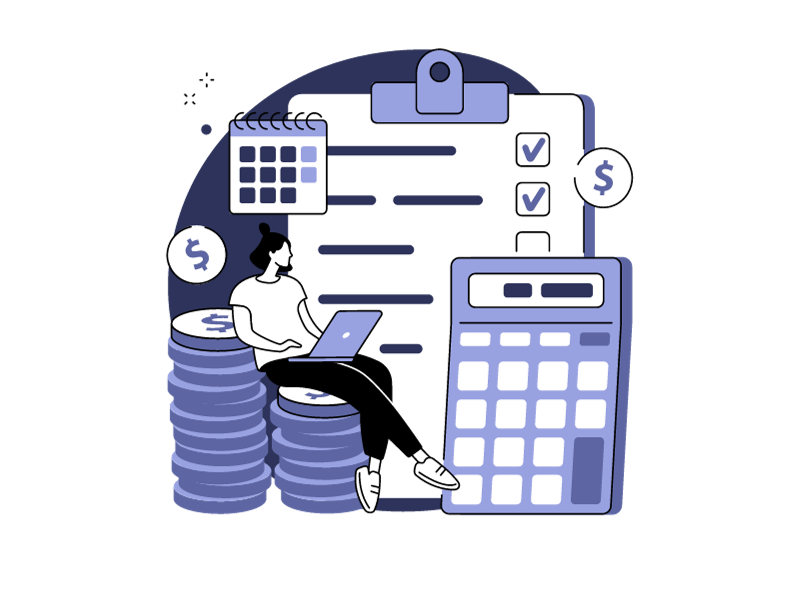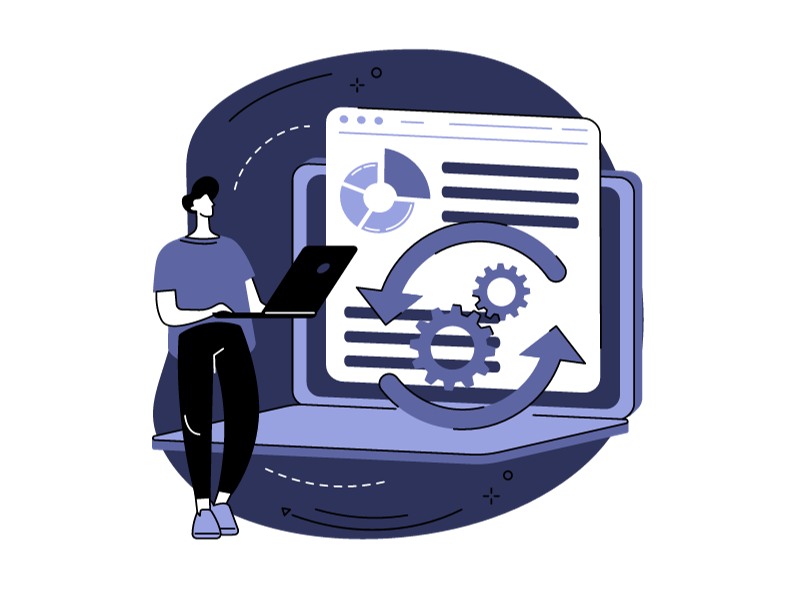

Customer lifetime value (CLV) is a performance indicator that every company should know and understand. Why should they? Because it's a barometer for measuring the long-term success of a customer relationship. CLV enables us to assess the total value generated by a customer over the entire duration of his or her relationship with the company. Understanding CLV enables you to improve customer relations: by identifying what keeps customers coming back, you can improve your product or service, offer better customer service, and thus increase overall customer satisfaction with your company. CLV helps you make decisions on a host of important elements, such as advertising budgets, marketing actions, and even product design. A high CLV generally means that your customers like what you do and will continue to buy from you.
CALCULATE CUSTOMER LIFETIME VALUE
Calculating CLV can be quite straightforward. Often, it boils down to multiplying the average value of a transaction by the number of recurring transactions and the length of the customer relationship. By knowing the total value a customer can bring, a company can adjust its marketing and advertising spend. For example, if a customer's CLV is $1,000, spending $100 to acquire the customer may seem more reasonable than if that CLV were only $200. CLV helps identify the most profitable customer groups. Let's consider two types of customers: those who make a one-off purchase and those who return regularly. Although regular customers may have a higher initial acquisition cost, their lifetime value (LTV) could be much higher, justifying the initial investment. Note that LTV is not set in stone. It can change according to customers' buying habits, prices, and even economic conditions.
| 💲 Average order value ($) | The average amount spent by a customer on a single order. |
| 🕑 Purchase frequency | The number of times a customer makes a purchase within a single year. |
| 📅 Average customer lifespan (years) | The average number of years a customer continues purchasing from your business. |
HOW TO CALCULATE CUSTOMER LIFETIME VALUE
Add the average value of the customer's order in dollars; then their purchasing frequency, i.e., their number of orders per year; then the customer's lifespan in years; and let the calculator tell you the LTV of your customer in dollars.


OUR TIPS FOR OPTIMIZING YOUR CUSTOMER LIFETIME VALUE
You're happy when people click, buy, or register on your site, aren't you? But what if those same people came back again and again? Customer lifetime value lets you quantify this loyalty. But to be able to count on positive figures for your business, you’ll need to put some key actions in place!
- Personalize the user experience: personalization isn't just a buzzword—it can really make a difference! Offer product recommendations based on previous purchasing behavior or special offers that match each customer's interests.
- Optimize your customer service: impeccable customer service can turn an unhappy customer into a loyal one. Make sure that your representatives are well trained, empathetic, and ready to solve problems.
- Constantly improve your product: a product without improvement won't make you a market leader. Listen to your customers' feedback and adapt accordingly. A small change can sometimes have a significant impact on LTV.
- Establish a loyalty program and rewards: consumers like to be rewarded. Create a loyalty program that encourages customers to come back and spend more, one that rewards them with loyalty points, discounts, or free gifts.
CUSTOMER LIFETIME VALUE (CLV) FAQ
What is customer lifetime value?
Customer lifetime value is a marketing concept that measures the financial potential a customer represents for a company over the course of their relationship with it. It's a prediction of the total amount of revenue a customer can bring in over the entire time they interact with your company. But remember, it's not just about numbers and calculations. Building customer loyalty means building a solid relationship. Providing good customer service, offering quality products, and creating a unique user experience are all ways of increasing a customer's lifetime value.
How do you calculate customer lifetime value?
To calculate CLV, several factors are taken into account: the amount spent on average by the customer, the frequency with which they make purchases, and the length of time they remain a customer. Variables such as customer acquisition and retention costs are also often included.
What are indicators of customer value?
Customer value is a key marketing concept that enables companies to assess a customer's long-term profitability. To measure this value, several indicators are used in addition to CLV, such as those below:
- Cost per lead (CPL): CPL measures the cost associated with acquiring a new prospect or "lead." In other words, it's the average cost incurred for each new potential customer attracted to the company.
- Retention rate: this indicator measures the proportion of customers who continue to purchase or use a company's services over a given period. A high retention rate is a good sign, as it generally costs less to maintain a relationship with an existing customer than to acquire a new one.
- Churn rate: the inverse of the retention rate, churn rate measures the proportion of customers who discontinue their relationship with a company during a given period.
- Average cart value: this is the average amount spent by a customer on a transaction. A high average cart value may indicate that customers tend to fill up their carts or gravitate towards higher-end products.
- Purchase frequency: this measures how often a customer makes a purchase over a given period. A high purchase frequency may indicate strong brand loyalty.
- Net Promoter Score (NPS): this is a measure of customer satisfaction and the likelihood of customers recommending a business to others. A high NPS is often associated with high customer satisfaction.
Create your online store with Wizishop
Access, browse and test all of our features with our 7-day trial, no strings attached





